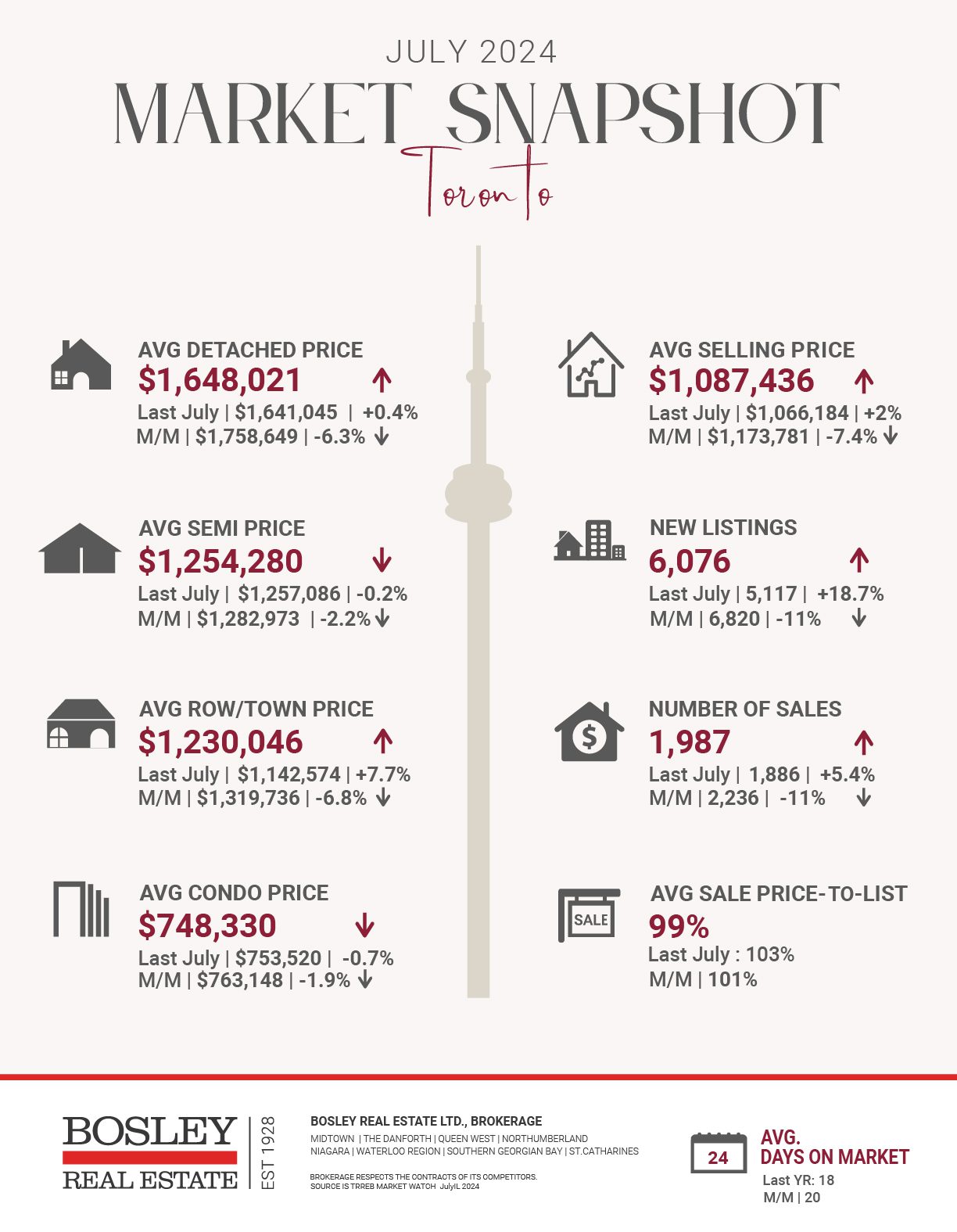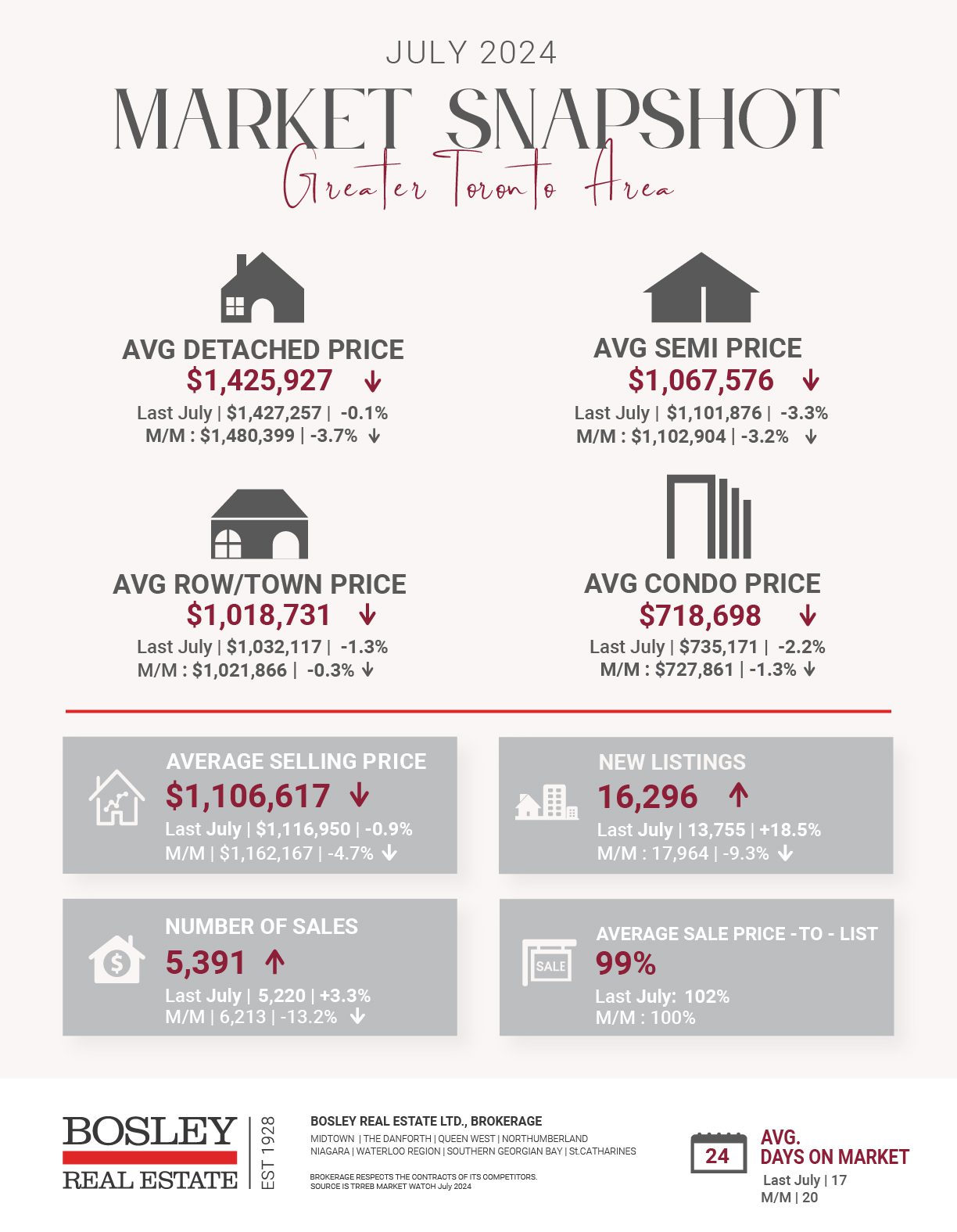


Toronto area new home sales continue to drop and hit an all-time low in July.
Sales of newly built homes continue to decline, with July hitting an unprecedented low for the month. The number of new project releases has been minimal, and months of inventory continue to rise.
In July, there were 654 new home sales, a 48% drop from the previous year and a 51% drop compared to the 1,339 new homes sales recorded in June. The number of transactions from July also sits 70% below the 10-year average according to a recent report from the Building Industry and Land Development Association (BILD).
“New home sales in the GTA in July 2024 reached another record low as potential buyers stayed on the sidelines,” said Edward Jegg, research manager at Altus Group, the official source of new home market data for BILD.
The reason? Building new homes is too expensive, period. And interest rate cuts aren’t helping, at least not yet. The cost of building, driven by excessive government fees and taxes, is simply too high. New construction activity will continue to slow and the GTA’s housing shortage will reach unprecedented levels over the next few years.
Slow sales and increased months of inventory also drove prices down in July, with the benchmark price for new single-family homes in the GTA hitting $1,585,881, down 5% over the last 12 months and dipping from $1,613,613 in June. There’s now 15 months of inventory — the time it would take to sell inventory based on current demand — on the market.
Further expected decreases in interest rates in the coming months, along with elevated inventories, means there will be plenty of opportunities once consumer confidence improves.
The Bank of Canada has begun lowering its key interest rate with two consecutive rate cuts this summer, and economists forecasting another two rate drops by the end of the year. While that will help boost some movement in the market, all levels of government could be more proactive, the report says.
Changes in interest rates will not solve what is an ongoing structural problem, particularly evident in the GTA. The cost to build, driven by excessive government fees and taxes, is simply too high. Without immediate action by government, new construction activity will continue to slow and the GTA’s housing shortage will reach unprecedented levels over the next few years.
Here are the top 5 trending stories of the week:
- Young GTA buyers shift from downtown condos to suburban homes: Here’s why it’s a problem | “The real estate market in the Greater Toronto Area (GTA) is interesting from a younger generation perspective, specifically with the decline of condominium sales and the rise of townhomes/semi-detached/detached home sales. Condominiums in the past were affordable and the primary purchase of first-time buyers. Their low cost and almost immediate equity return made them enticing for young purchasers. However, this is not as common these days.”
- The Most Common Reasons Behind Real Estate Receiverships And Insolvencies | “Like a bad fashion choice, this season’s “in thing” is actually the thing most regular folks want to avoid the most: forbearances, receivership, and insolvency. It’s like getting a new jacket and forgetting to remove the tacking stitch on it or throwing that cashmere sweater in the dryer by mistake (done it, not doing it again). At the end of the day, the reason most receiverships appear to have cost overruns is because developers either had equity calls, they could not fund, or because they chose to try and hide overruns, either through side contracts or by taking on other undisclosed high interest debt to fund. Amongst it all, there has been the odd example of some potentially dodgy stuff going on.”
- Here’s how much you can make renting your basement in and around Toronto | “The fact that Toronto rent prices are easing up ever so slightly doesn’t really mean much given that we’re still the third-priciest place for tenants in the entire country, and a new report is shedding light on how costly even less desirable apartments in the city can be. Basements are not often at the top of renters’ lists, given their lack of natural light, low ceilings and potential for everyday noise disturbances from above. However, they are usually a far cheaper alternative to other units of the same size.”
- Feds identify 56 government properties for conversion to affordable housing | “The federal government has added 56 properties to a new public lands bank of locations that are suitable for long-term leases so developers can build affordable housing. Housing Minister Sean Fraser made the announcement today in Halifax just ahead of a three-day cabinet retreat intended to prepare for the upcoming fall sitting of Parliament. Former military bases, Canada Post sites and federal office buildings are among the properties currently included in the public lands bank, many of which were previously set aside for sale as they are no longer in use.”
- Feds warn of rising dirty money in Canadian real estate | “Canadian real estate is increasingly being used to launder dirty money, according to a recent warning from a federal agency, says Blacklock’s Reporter. The Financial Transactions and Reports Analysis Centre (FINTRAC) has issued an Operational Alert, urging caution over suspicious activities in the real estate sector, including the flipping of titles on unbuilt condominiums.”

The Bosley Advantage
Read about the heritage and innovation that form the foundation for Bosley’s industry-leading approach to real estate.







